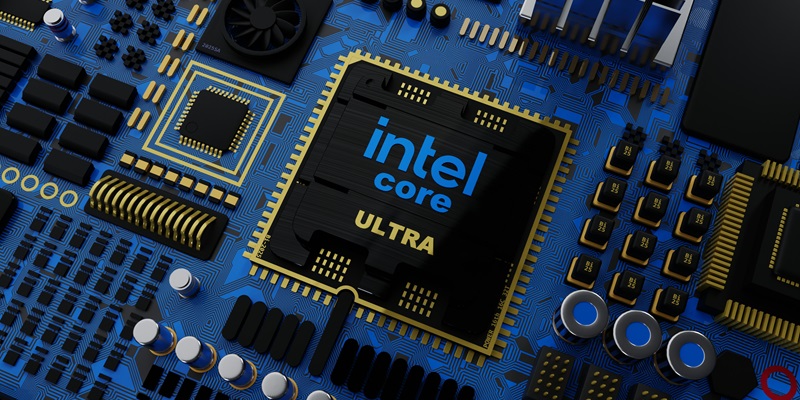Intel’s new upcoming Lunar Lake CPUs, which feature the Battlemage-based Arc 140V integrated GPU (iGPU), have generated significant interest in the tech community. Specifically, the Core Ultra 7 258V, part of this next-generation lineup, has demonstrated impressive performance metrics. Recent benchmark results on Geekbench 6.3 reveal the Arc 140V iGPU scoring 31,560 and 34,181 points in the Vulkan test. These scores suggest that the Intel Arc 140V is on par with AMD’s Radeon 780M iGPU, often found in handheld gaming devices like the ROG Ally and Lenovo Legion Go.
Benchmark Results and Competitive Performance
The competitive performance of the Arc 140V is particularly noteworthy given its benchmarks on Geekbench 6.3. Scoring 31,560 and 34,181 points in the Vulkan test means that this new iGPU stands toe-to-toe with AMD’s Radeon 780M. The Radeon 780M has been a consistent performer in the realm of handheld devices, making Intel’s achievement all the more significant. For consumers, this performance parity suggests that devices powered by Intel’s upcoming Lunar Lake CPUs will offer an experience comparable to leading AMD-based solutions.
Notably, this performance parity translates to practical advantages for handheld device enthusiasts. With devices like the ROG Ally and Lenovo Legion Go already enjoying positive reception due to their AMD Radeon 780M iGPUs, Intel’s Arc 140V offers an alternative without compromising. This equivalency could lead to more competitive pricing and increased innovation in device designs, enhancing user choices and experiences. Furthermore, for Intel, this development marks a substantial step forward in its quest to match or exceed AMD’s mid-range iGPU offerings.
Implications for Market Dynamics
The potential market impact of Lunar Lake-powered devices is significant. One such upcoming device, the MSI Claw, will be powered by this new architecture, likely capturing the attention of gamers and tech enthusiasts alike. Early benchmarks indicate that the Arc 140V offers slightly better performance than its predecessor, hinting at continuous improvement and providing Intel a stronger foothold in the mid-range CPU market.
These advancements go beyond mere performance metrics; they signify Intel’s aggressive entry into a market segment traditionally dominated by AMD. The efficiency of the new Lunar Lake architecture, featuring Lion Cove and Skymont cores, underscores Intel’s commitment to delivering both power and efficiency. For consumers, this means expectant gains in performance without the corresponding increases in power consumption. This balance is critical for handheld devices, where battery life and thermal management are as important as raw processing power.
Architectural Advancements of Lunar Lake
The impressive efficiency of Intel’s Lunar Lake architecture is a crucial talking point. Combining the new Lion Cove and Skymont cores, this architecture aims to offer high performance without sacrificing efficiency. The Lion Cove cores are designed to handle demanding tasks, while the Skymont cores come into play for less intensive operations, optimizing overall energy consumption and performance.
The architectural advancements encapsulated in the Lion Cove and Skymont cores mark a paradigm shift in integrated GPU design. Leveraging these new cores, the Lunar Lake CPUs promise enhanced multitasking capabilities and smoother user experiences. This synergy between high performance and efficiency is especially relevant in today’s tech landscape, where power efficiency is as valued as processing capability. The Lion Cove cores’ ability to ramp up for demanding tasks, paired with Skymont’s efficiency for lighter processes, ensures that users experience sustained performance without excessive power drain.
Positioning in the Competitive Landscape
Overarching trends indicate that Intel is striving to enhance the performance and efficiency of its iGPUs to mount a significant challenge to AMD’s dominance. The Arc 140V’s benchmark results and the underlying architectural improvements suggest Intel is making meaningful strides. The consensus within the tech community is positive; the Arc 140V stands as a viable competitor to current AMD solutions.
The recognition of the Arc 140V as a formidable contender in the mid-range CPU market reflects Intel’s strategic focus. By prioritizing performance and efficiency in its iGPU design, Intel effectively broadens the appeal of its Lunar Lake series. Future models, such as the Strix Point with its anticipated Radeon 890M, are expected to further intensify this competitive dynamic. However, Intel’s proven capability with the Arc 140V suggests that they are well-prepared to contend with and potentially outperform impending AMD offerings.
Conclusion
Intel’s forthcoming Lunar Lake CPUs are creating buzz in the tech world, mainly because they feature the remarkable Battlemage-based Arc 140V integrated GPU (iGPU). Among the standout models is the Core Ultra 7 258V, a promising candidate in Intel’s next-gen lineup that has shown noteworthy performance. Recent benchmarks on Geekbench 6.3 have revealed commendable scores for the Arc 140V iGPU, achieving 31,560 and 34,181 points in the Vulkan test. These numbers are particularly intriguing as they signify that Intel’s Arc 140V iGPU is comparable to AMD’s Radeon 780M iGPU. The Radeon 780M is recognized for its inclusion in several high-performance handheld gaming devices, such as the ROG Ally and Lenovo Legion Go. Hence, Intel’s latest integrated GPU offering holds considerable promise for gamers and tech enthusiasts alike, suggesting potential competitiveness in the market traditionally dominated by AMD’s advanced graphics technology. This development underscores Intel’s persistent push to elevate its GPU capabilities and could shift dynamics in the tech industry moving forward.

